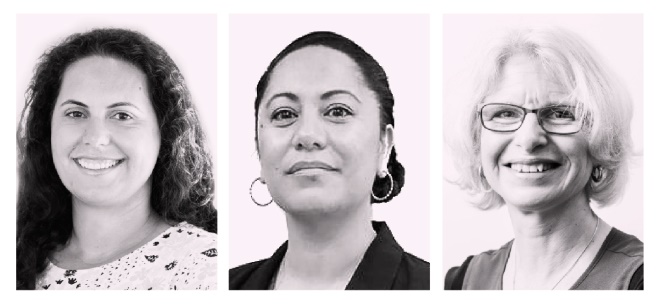
shutterstock.com
Unconscious biases are learned stereotypes that are driven by the cultures we live and move in, as well as our personal experiences. Disadvantage is reinforced by dominant systems and those who are already in a position of privilege continue to enjoy advantages.
For some, ‘unconscious’ bias could suggest that nothing can be done to change the way we act, but we must be conscious of our thinking for us to become culturally competent healthcare practitioners who are able to interact respectfully and effectively with people from a background different to our own; not just aware, or sensitive to, another culture, but be able to use this knowledge in cross-cultural situations[1]
. We also need to be prepared to be critical during our reflections of our own patient interactions, and those of our peers and our profession. We can contribute to increasing access to health services and reducing health inequities by becoming a culturally competent profession[2]
.
In pharmacy practice, we can be critical of assumptions we make about medicines adherence: are there particular groups of people that we feel are less likely to take medicines? Why do we think this? Are we providing people with appropriate support or do judgements arising from these assumptions affect the care we provide?
Differences in health outcomes between different groups in New Zealand are not only avoidable, but unfair and unjust. This is especially true for MÄori, the indigenous people. MÄori people experience stark disadvantages in a number of determinants of health, such as education, employment and housing. These negative effects compound over the course of a life, and MÄori people have the lowest life expectancy of any ethnic group in New Zealand.
Research has also shown that non-MÄori people are more likely to receive medicines to treat and prevent chronic conditions than MÄori people.
MÄori people are more likely than non-MÄori people to be prescribed ‘high-risk’ medicines[3]
.
Similarly, there are differences in health outcomes in the UK that are avoidable, unfair and unjust. This health inequity may relate to residing in more or less deprived areas, but UK residents also experience disparities relating to their ethnicity and other cultural affiliations[4]
.
In 2012, culturally competent pharmacy practice became mandatory in New Zealand. And from 2019, the New Zealand Pharmacy Council (PCNZ) added a new requirement for all practising pharmacists to show evidence of their continuing professional development in cultural competence.
Pharmacists need to examine the balance of power in their healthcare interactions, and empower all patients to participate in their own healthcare, in the capacity and to the extent they desire.
A pharmacist should be supported to develop relevant skills, knowledge and attitudes during their undergraduate education. But, as the PCNZ recognises, developing cultural awareness, safety and competence involves an ongoing cycle of planning, learning, action and reflection.
The School of Pharmacy at the University of Auckland in New Zealand supports students to develop in this area by intertwining culture-related activities in the curricula with other activities, such as developing communication skills in different settings, and practising medication-related conversations with a variety of people. Learning opportunities are frequent and varied; learning is not siloed and students see and hear many different perspectives.
Examples of activities and experiences include peer reviewing to harness the power of a diverse student body; using communication frameworks (relating to cultural competence, building health literacy and patient-centred care); and participating in several experiential simulations (a poverty simulation, for example)[5]
.
Students complete reflective exercises around issues pertaining to Hauora MÄori (MÄori health and wellbeing which is multi-dimensional) one of five domains of the bachelor of pharmacy curriculum. They also attend interprofessional learning events and varied experiential learning placements to provide regular opportunities to learn from others, and develop cultural competence in a safe and encouraging environment.
For UK pharmacy schools to enhance the cultural competence of their students and staff we suggest: listening to and understanding the needs of people from different backgrounds; developing relationships with local communities and relevant organisations; involving them in planning and teaching; setting relevant learning outcomes, assessment, checking-in with the parties involved, evaluating, and modelling culturally inclusive practices[6]
.
To find out more about the work described in this blog, please contact: admin@mpa.mÄori.nz
Box 1: The MÄori Pharmacists’ Association (MPA)
NgÄ Kaitiaki o Te Puna RongoÄ, the MÄori Pharmacists’ Association (MPA), is an organisation driven by a vision to lead the pharmacy sector in responding to the needs of MÄori. Its ultimate goal is to improve outcomes and achieve health equity for MÄori. The MPA has been instrumental in ensuring the relevant New Zealand competency standards for pharmacists relating to Hauora MÄori (MÄori health and wellbeing) were implemented.
About the authors:

Source: Jo Hikaka, Mariana Hudson, Trudi Aspden
Jo
Hikaka is a MÄori pharmacist and PhD candidate in Auckland, New Zealand;
Mariana Hudson is acommunity pharmacy owner in rural New Zealand and vice president of the MÄori Pharmacists’ Association;
Trudi Aspden is a pharmacist and senior lecturer in pharmacy practice at the School of Pharmacy, University of Auckland.
References:
[1] Pharmacy Council of New Zealand. Competence standards for the pharmacy profession. January 2015. Available at: http://www.pharmacycouncil.org.nz/Portals/12/Documents/standrdsguidelines/CompStds2015Web.pdf?ver=2017-02-20-104344-17 (accessed September 2019)
[2] Te Karu L, Bryant L, Harwood M, et al. Achieving health equity in Aotearoa New Zealand: the contribution of medicines optimisation. J Prim Health Care 2018;10(1):11–15. doi: 10.1071/HC17067
[3] Metcalfe S, Beyene K, Urlich J, et al. Te Wero tonu—the challenge continues: MÄori access to medicines 2006/07–2012/13 update. NZ Med J 2018;131(1485):27–47. PMID: 30408816
[4] Public Health England. Public health outcomes framework: health equity report: focus on ethnicity. 2017. Available at: https://assets.publishing.service.gov.uk/government/uploads/system/uploads/attachment_data/file/733093/PHOF_Health_Equity_Report.pdf (accessed September 2019)
[5] Aspden T, Sheridan JL, Harrison J. “Talking and thinking”: the impact of a simulation on pharmacy undergraduates’ beliefs and attitudes about living in poverty. Curr Pharm Teach Learn 2016;8(4):447–457. doi: 10.1016/j.cptl.2016.03.016
[6] Aspden T, Butler R, Heinrich F, et al. Identifying key elements of cultural competence to incorporate into a New Zealand undergraduate pharmacy curriculum. Pharmacy Education 2017(18). Available at: http://pharmacyeducation.fip.org/pharmacyeducation/article/view/477 (accessed September 2019)

